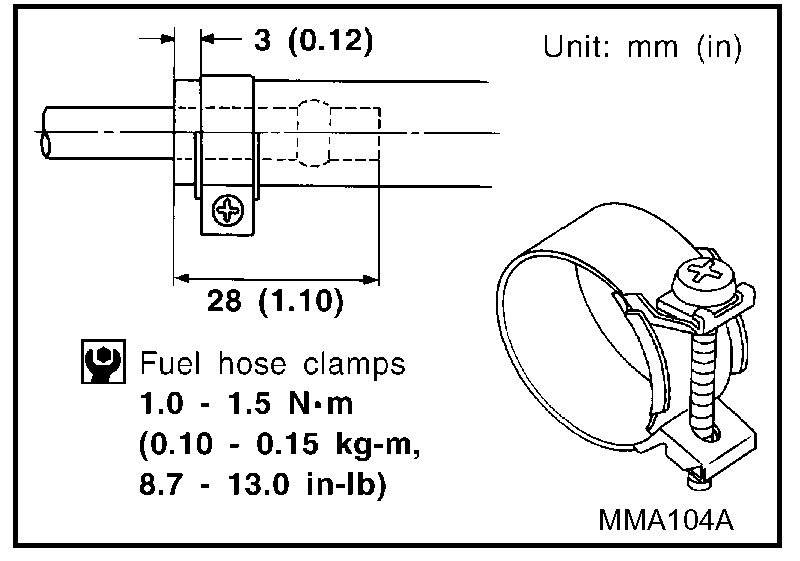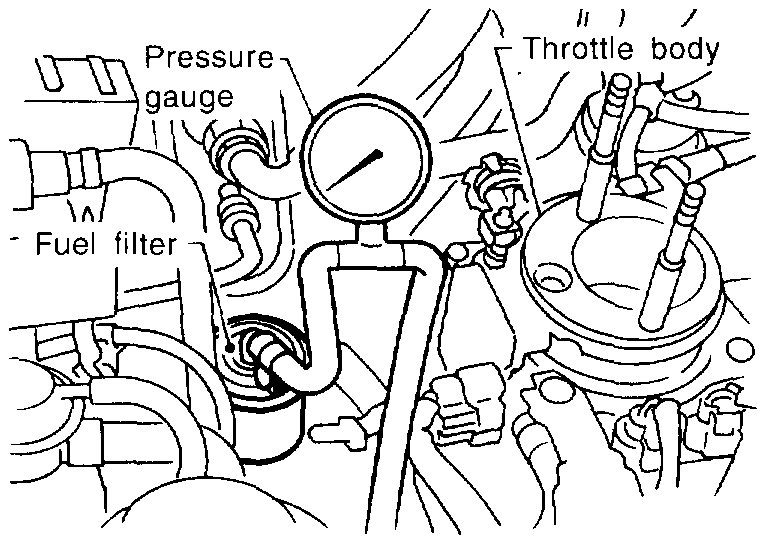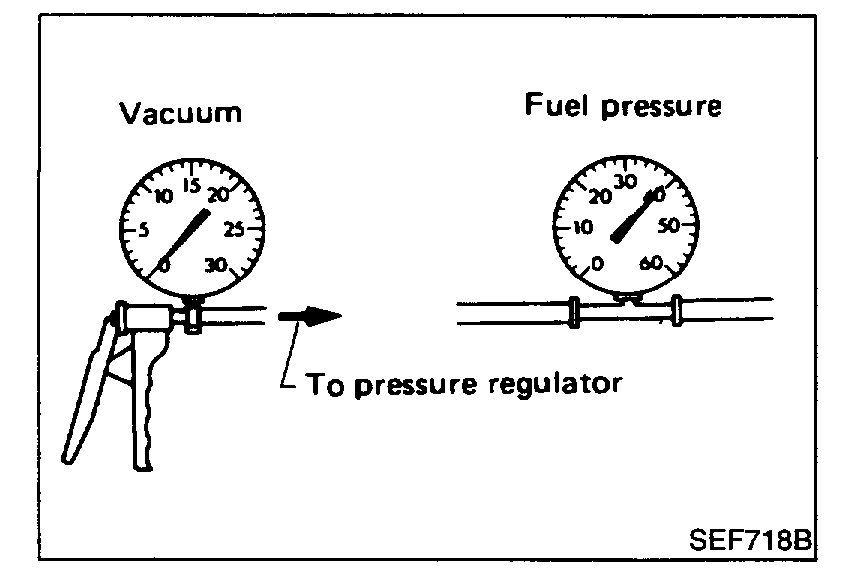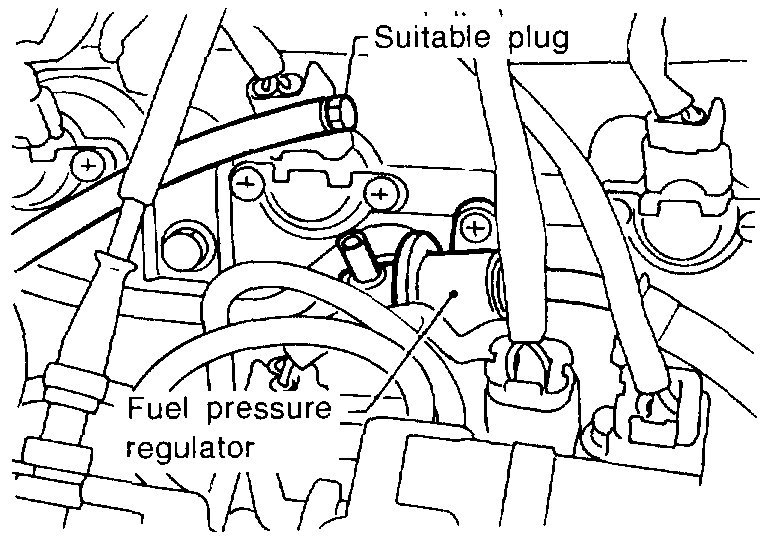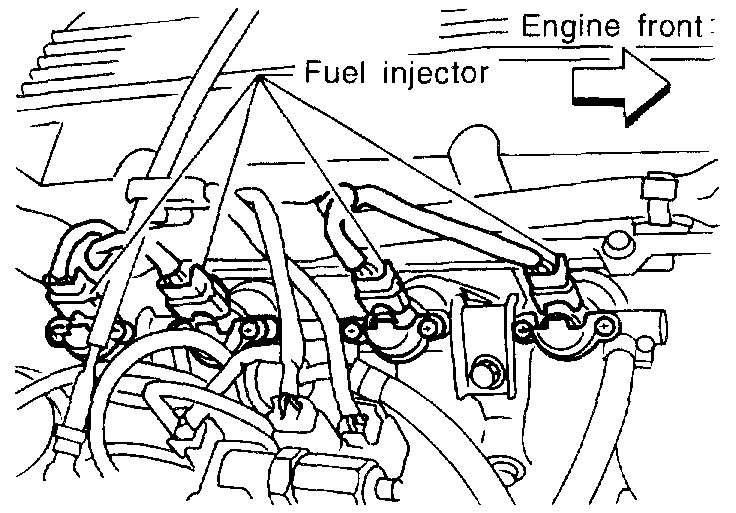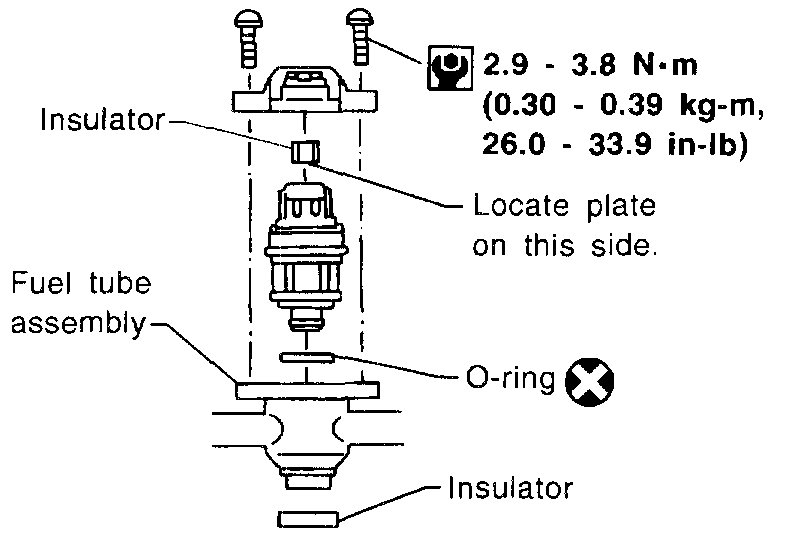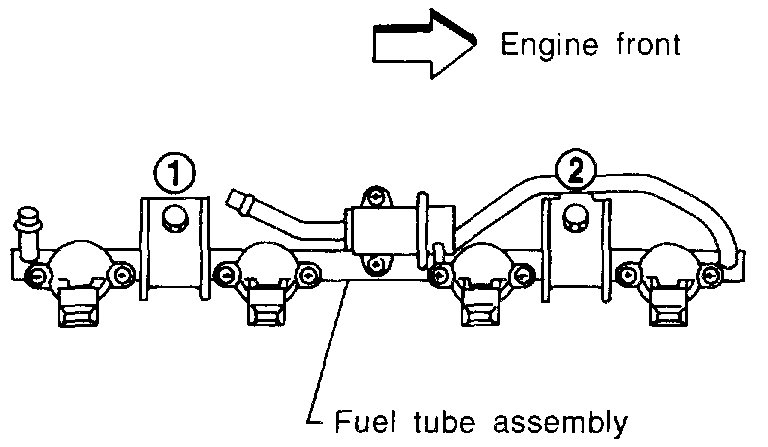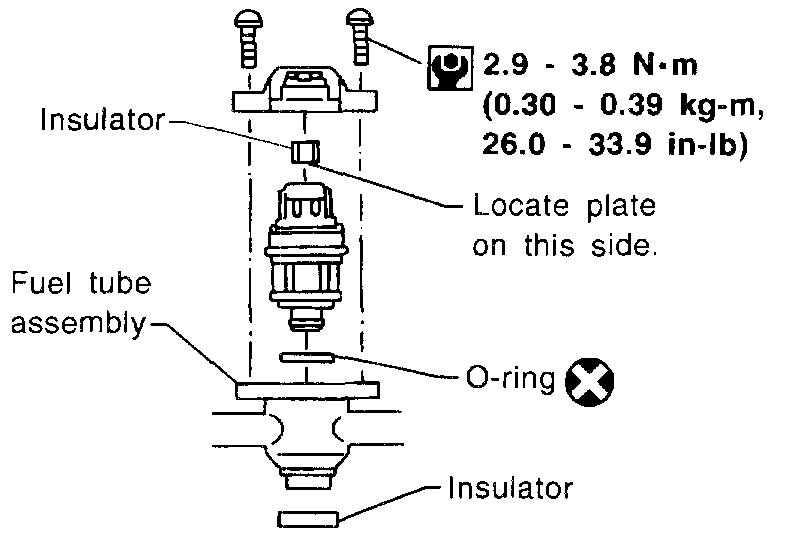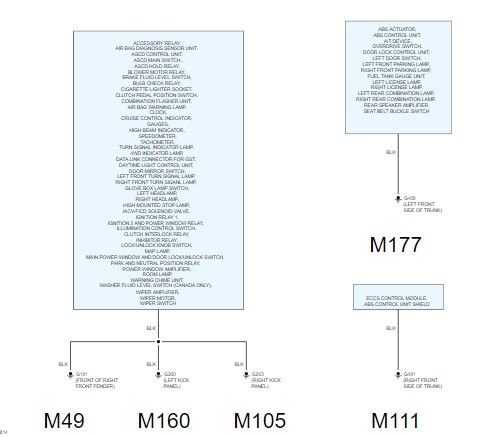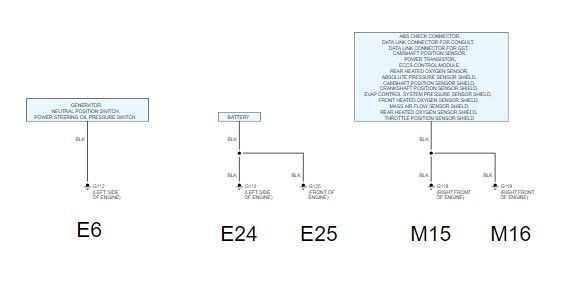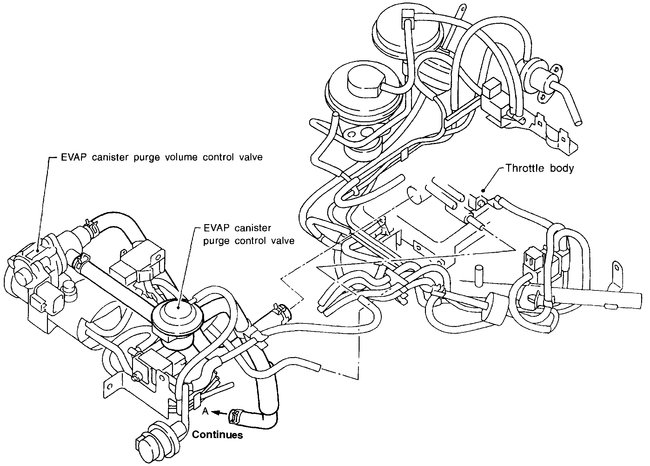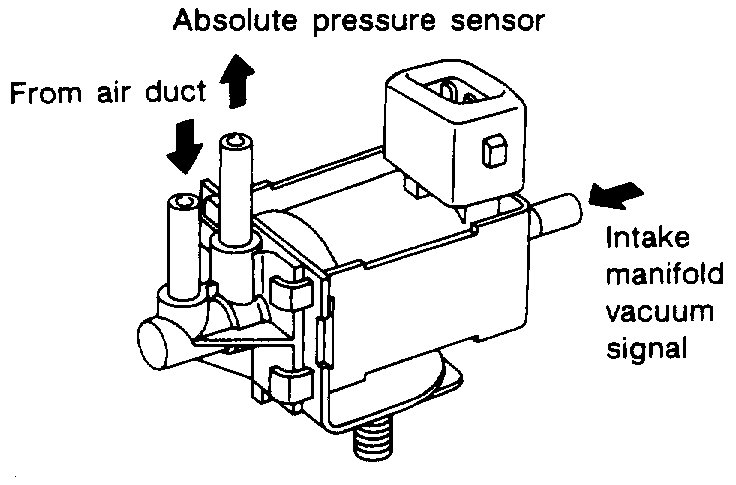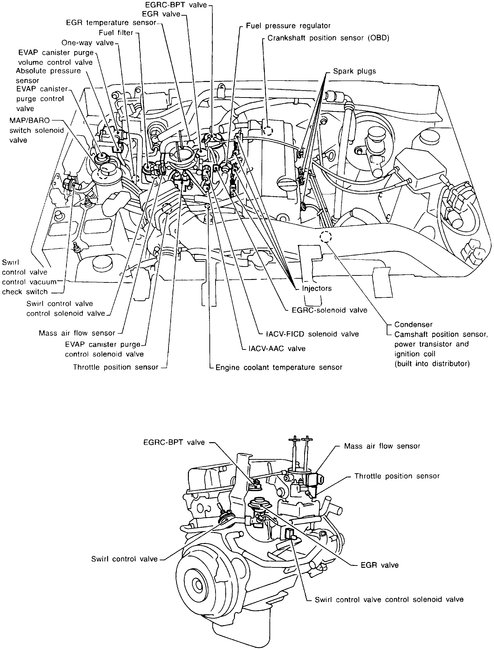Welcome back, JC
The regulator on your truck is vacuum operated. To check it, you need to do a fuel pressure test and basically disconnect the regulator to see if things change. I will tell you that often times when they fail, it will draw fuel into the vacuum hose, so pay attention when you remove it.
Here is a link that shows in general how to check pressure and the regulator:
https://www.2carpros.com/articles/how-to-check-fuel-system-pressure-and-regulator
Here are the directions specific to your vehicle for checking pressure and the regulator:
___________________________
FUEL PRESSURE CHECK
PROCEDURE
(pic 1)
a. When reconnecting fuel line, always use new clamps.
b. Make sure that clamp screw does not contact adjacent parts.
c. Use a torque driver to tighten clamps.
d. Use Pressure Gauge to check fuel pressure.
1. Release fuel pressure to zero.
2. Disconnect fuel hose between fuel filter and fuel tube (engine side).
(pic 2)
3. Install pressure gauge between fuel filter and fuel tube.
4. Start engine and check for fuel leakage.
(pic 3)
5. Read the indication of fuel pressure gauge.
At idling: Approximately 235 kPa (2.4 kg/sq. cm, 34 psi)
A few seconds after ignition switch is turned OFF to ON:
Approximately 294 kPa (3.0 kg/sq. cm, 43 psi)
6. Stop engine and disconnect fuel pressure regulator vacuum hose from intake manifold.
(pic 4)
7. Plug intake manifold with a rubber cap.
8. Connect variable vacuum source to fuel pressure regulator.
9. Start engine and read indication of fuel pressure gauge as vacuum is changed.
Fuel pressure should decrease as vacuum increases. If results are unsatisfactory, replace fuel pressure regulator.
______________________________
If you find the regulator is good and the injector needs replaced, here are the directions. The remaining pictures correlate with these directions.
INJECTOR REMOVAL AND INSTALLATION
PROCEDURE
1. Release fuel pressure to zero.
2. Remove injector tube assembly with injectors from intake manifold.
(pic 5)
3. Remove injectors from injector tube assembly.
- Push injector tail piece.
- Do not pull on the connector.
(pic 6)
4. Install injector to fuel tube assembly.
a. Clean exterior of injector tail piece.
b. Use new O-rings.
Always replace O-rings with new ones.
Lubricate O-rings with a smear of engine oil.
5. Install injectors with fuel tube assembly to intake manifold.
Tighten in numerical order shown in the figure.
a. First, tighten all bolts to 9.3 to 10.8 N.m (0.95 to 1.1 kg-m, 6.9 to 8.0 ft-lb).
b. Then, tighten all bolts to 21 to 26 N.m (2.1 to 2.7 kg-m, 15 to 20 ft-lb).
(pic 7)
6. Install fuel hoses to fuel tube assembly.
7. Reinstall any parts removed in reverse order of removal.
CAUTION: After properly connecting injectors to fuel tube assembly, check connections for fuel leakage.
___________________________________________
If you replace the injector, check all rubber o-rings. You don't want a fuel leak. A small nick can cause a leak. Also, I always lube the o-rings with petroleum jelly. Sounds crazy, but it works great.
If the injector was dumping fuel, make sure to change the oil. I hope it didn't hurt the catalytic converter.
Let me know if this helps or if you have other questions.
Take care,
Joe
Images (Click to make bigger)
Friday, November 16th, 2018 AT 8:50 PM
